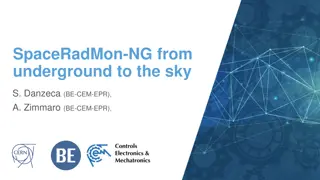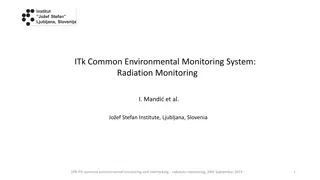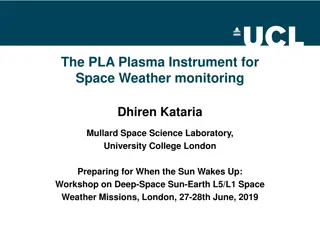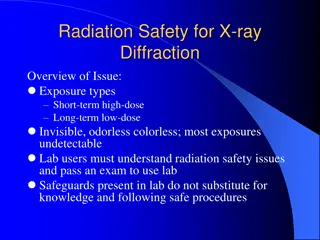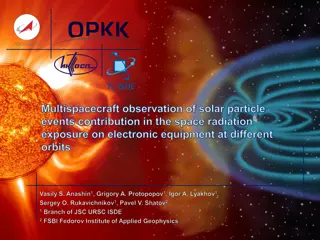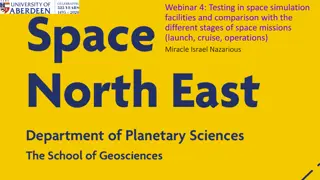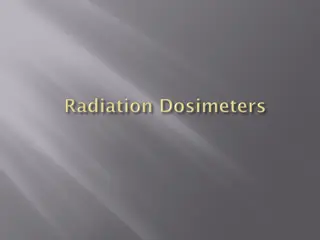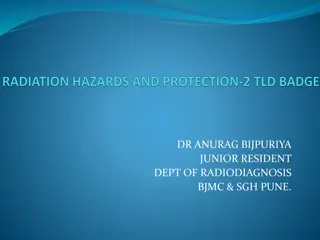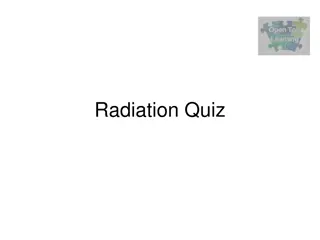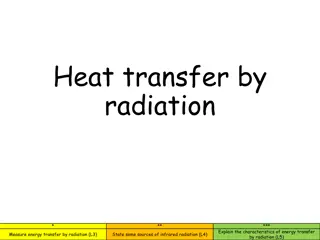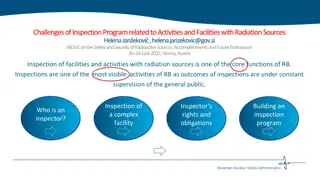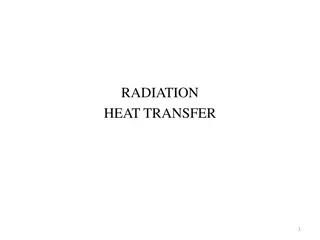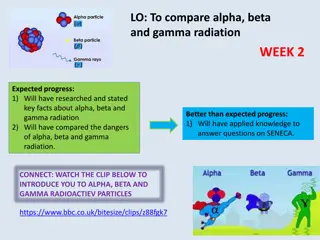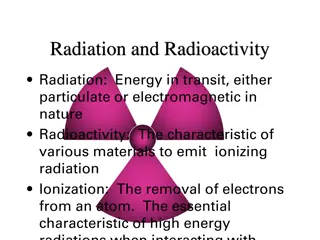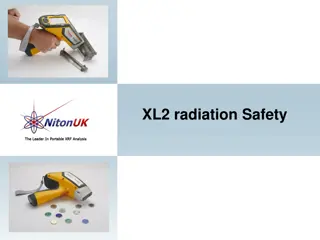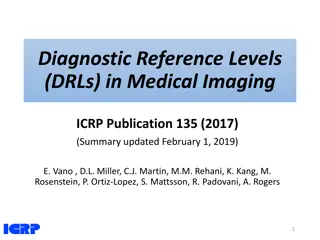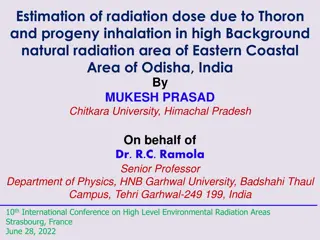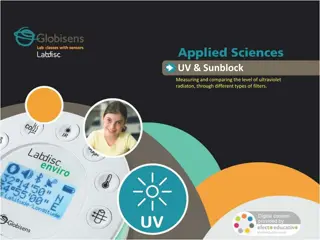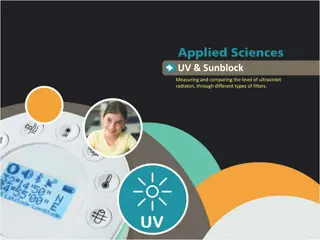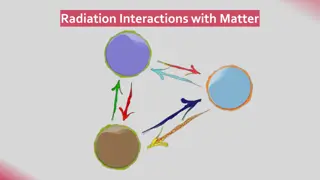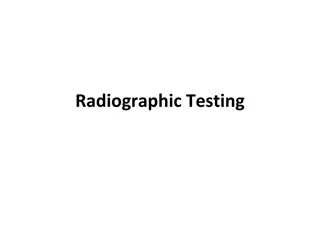Advances in Radiation Monitoring Technology for Space Missions
Cutting-edge radiation monitoring technology developed by Jonathan Rae and the team at the Laboratory for Particle Physics, Paul Scherrer Institut, aims to provide in-situ measurements of protons, electrons, and ions for space missions. The LGR Radiation Monitor (RM) features improved detection technology, identification of ion species, and real-time telemetry capabilities. It is designed to capture solar energetic particles with high sensitivity and directionality. The novel heavy ion telescope concept is being validated through successful demo models and tests, showcasing advancements in ion identification and energy resolution.
Uploaded on Sep 30, 2024 | 0 Views
Download Presentation

Please find below an Image/Link to download the presentation.
The content on the website is provided AS IS for your information and personal use only. It may not be sold, licensed, or shared on other websites without obtaining consent from the author. Download presentation by click this link. If you encounter any issues during the download, it is possible that the publisher has removed the file from their server.
E N D
Presentation Transcript
WIR SCHAFFEN WISSEN HEUTE FR MORGEN By Jonathan Rae on behalf of RM team led by Wojtek Hajdas:: Laboratory for Particle Physics :: Paul Scherrer Institut LGR Radiation Monitor for LGR mission LGR RM; V1.0; 28-Jun-2019
LGR Radiation Monitor RM Total mass 2.5 kg Power 3.6 W Envelope 128x180x80 mm3 Measurement capability: Electron spectra up to 15 MeV Proton spectra up to 1 GeV MeV Heavy ions spectra up to 1 GeV/n Identifies and separates ion species Determines particles direction Front and rear side detections Semi-real time particle rates telemetry with alarm flags RM mechanical model Improved detection technology based on six detector heads Measurement techniques similar to: NGRM (two detector heads) e.g. for MetOP and MTG RADEM (four detector heads) for JUICE POLAR (scintillator array) Novel concept of the heavy ion detector with dedicated ASIC Long duration Solar Energetic Particle events measured by IREM instrument on Integral (see http://srem.web.psi.ch) Sensors: PSI - design and Norway - manufacturing ASICs: PSI - design and manufacturing and Norway - manufacturing LGR London Meetings / 28 Jun 2019 Page 2
Radiation Monitor Measurement requirements The RM instrument shall provide in-situ measurements of protons with kinetic energies between 1 MeV and 500 MeV (1 GeV). I-IRD-RM-OBS-0020 The RM instrument shall provide in-situ measurements of electrons with kinetic energies between 100 keV and 8 MeV. I-IRD-RM-OBS-0030 The RM instrument shall provide measurements of the energy distribution and flux of ions with kinetic energies between 1 MeV/nuc and 500 (1 GeV) MeV/nuc. I-IRD-RM-OBS-0040 The RM instrument shall be sensitive to alpha particles, CNO group and Fe. (goal: protons, alpha particle (resolve He3 and He4), CNO group (resolve C, N and O), Si/Ne, Fe, Ni, plus single measure for heavier ions). I-IRD-RM-OBS-0050 Page 3 The RM instrument shall measure protons within 8 energy channels covering the I-IRD-RM-OBS-0060
RM suited to capture solar energetic particles Front and rear detection sensitivity Directionality sensor Particle telescope Readout ASIC (PSI, rad-hard) Energy range coverage of the heavy ion telescope (left ) and proton telescope (right) LGR London Meetings / 28 Jun 2019 Page 4
Novel heavy ion telescope concept verification Stack of fast scintillators Optimization for ion identification Large energy range Coupled to PSI rad-hard ASIC Successful Demo model tests Proton beams in PSI/Switzerland Heavy ion beams in GANIL/France Demo model of the heavy ion telescope (left) and its readout electronics (right) Initial concept validation Confirmation of readout electronics Energy coverage Energy resolution Ion identification Energy deposition pulses in 3 detector layers (left) and energy resolution peak (right) LGR London Meetings / 28 Jun 2019 Page 5
Mechanical and Thermal design and models Thermal model constrains P = 3.6 W Total Sun power 1.5W Two walls facing to the sun at 45 Thermal insulation from spacecraft Conclusion Self-sustained operating temperatures Only Central Unit ON T < -31 C Normal operation T = 16 - 35 C Mechanical model constrains Fixed boundary conditions All structures included Mass of 2.5 kg Copper Young module 2000 MPa Conclusion Lowest natural frequency > 700 Hz LGR London Meetings / 28 Jun 2019 Page 6
Electronics design and performance modeling Radiation environment modeling Solar Energetic Particles / 10 years mission Biggest TID and DD contribution Dose behind 2 mm Al D 14 krad Smaller values from Cosmic Rays Electronics design Sub-system Schematics PCB Central unit and power Proton/Electron Telescope Front PET Rear DirectionalityDetector DD Sensor Heavy Ion Telescope Design of all sub-systems completed Further reduction of power in HIT (<1W) Components selection (EM, EQM) I/O SpaceWire implemented Heat transfer implemented Response modeling with electrons and protons Conclusion 10% spectral accuracy reached within about 15 min for energies up to 100 MeV and the worst case flux LGR London Meetings / 28 Jun 2019 Page 7
Wir schaffen Wissen heute fr morgen Thank you Page 8


